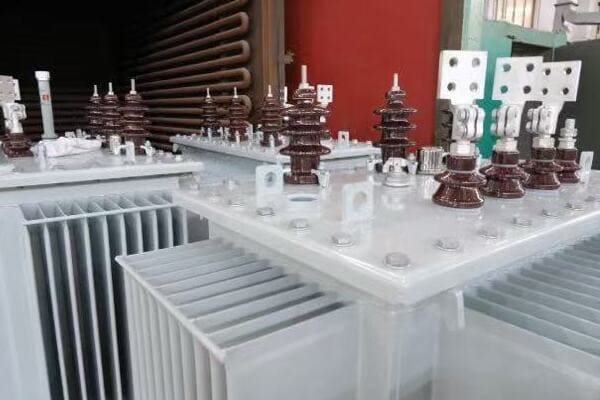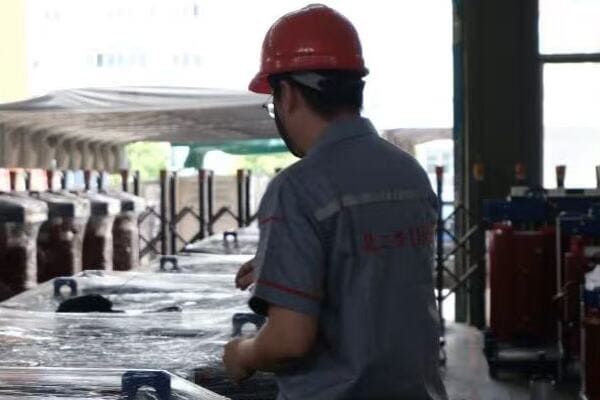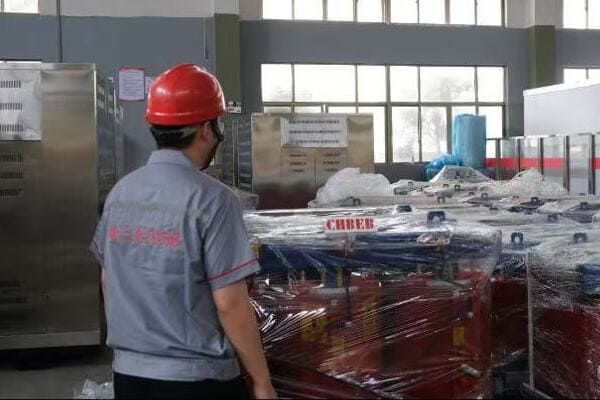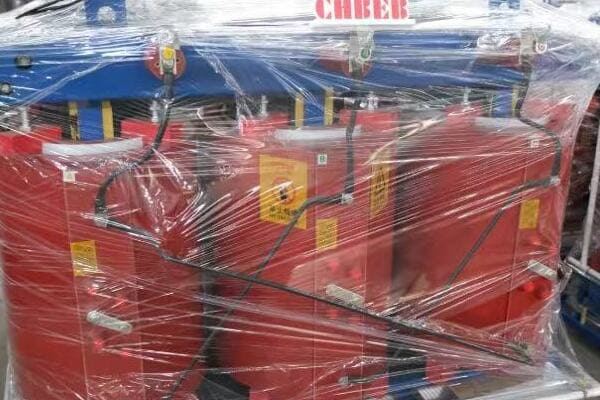What Is an Electrical Substation? A Beginner’s Guide to Power Grid Infrastructure?
Have you ever wondered about those fenced-off areas filled with electrical equipment? They’re more important than you might think. These are electrical substations, and they’re vital to our power grid.
An electrical substation is a key part of the power grid that transforms voltage levels, switches connections, and helps distribute electricity. It acts as a control center for the flow of electrical power, ensuring safe and efficient energy delivery from power plants to homes and businesses.

As an electrical engineer who’s spent years working with substations, I can tell you they’re fascinating places. They’re like the heart of our power system, pumping electricity to where it’s needed. Let’s dive into the world of substations and discover why they’re so crucial to our daily lives.
The Basics of Electrical Substations: Functions and Importance in Power Distribution?
Ever flipped a light switch and wondered how that electricity got to your home? The journey involves electrical substations, but what exactly do they do? Let’s shed some light on this often-overlooked part of our power system.
Electrical substations serve three main functions: voltage transformation, circuit switching, and power system control. They’re essential for efficient power distribution, helping to step voltage up for long-distance transmission and down for local use, while also providing crucial safety and control mechanisms.
I remember my first visit to a substation as a young engineer. The scale and complexity of the equipment were overwhelming. But once I understood the basic functions, it all started to make sense. Let me break it down for you:
Voltage Transformation: The Heart of Substation Operations
Substations are all about managing voltage levels:
-
Step-Up Transformation
- Increases voltage for long-distance transmission
- Reduces power losses over long distances
-
Step-Down Transformation
- Decreases voltage for local distribution
- Makes electricity safe for home and business use
Circuit Switching: Managing Power Flow
Substations act like traffic controllers for electricity:
| Function | Purpose | Benefit |
|---|---|---|
| Connecting/Disconnecting Lines | Control power flow | Flexibility in power distribution |
| Isolating Faulty Sections | Prevent widespread outages | Improved system reliability |
| Load Balancing | Optimize power distribution | Efficient use of resources |
System Control and Protection
Substations play a crucial role in maintaining grid stability:
-
Monitoring
- Real-time tracking of power flow and equipment status
- Early detection of potential issues
-
Protection
- Automatic fault detection and isolation
- Prevents damage to expensive equipment
-
Power Quality Management
- Maintains consistent voltage and frequency
- Ensures reliable power supply to consumers
I once worked on a project to upgrade an old substation’s control systems. The improvement in response time and accuracy was remarkable. It showed me how crucial these control functions are for a stable power supply.
The Importance of Substations in Power Distribution
Substations are more than just a collection of electrical equipment:
-
Efficiency Enablers
- Allow for efficient long-distance power transmission
- Reduce energy losses in the distribution process
-
Grid Stability Guardians
- Help maintain consistent power quality
- Respond quickly to changes in demand or supply
-
Safety Enforcers
- Provide multiple layers of protection against electrical faults
- Ensure safe voltage levels for end-users
-
Flexibility Providers
- Allow for easy integration of new power sources
- Enable quick reconfiguration of power flow paths
Remember, every time you use electricity, you’re benefiting from the work done by substations. They’re the unsung heroes of our power grid, working tirelessly to ensure we have safe, reliable electricity whenever we need it.
Anatomy of a Substation: Key Components and Their Roles in Power Management?
Have you ever looked at a substation and wondered what all those strange-looking pieces of equipment do? It’s like a complex puzzle, but each piece has a crucial role. Let’s unravel this mystery together.
A typical substation consists of several key components: transformers for voltage changes, circuit breakers for protection, busbars for power distribution, insulators for safety, and control systems for management. Each component plays a vital role in ensuring the safe and efficient flow of electricity through the power grid.

As someone who’s spent countless hours designing and working with these components, I can tell you that understanding their functions is key to grasping how our power system works. Let’s break down the main parts:
Transformers: The Voltage Changers
Transformers are the workhorses of a substation:
- Function: Change voltage levels
- Types:
- Step-up transformers (increase voltage)
- Step-down transformers (decrease voltage)
I once worked on replacing an old transformer in a city substation. The new unit was so much more efficient that it reduced energy losses by 30%. It showed me how crucial good transformer design is for energy conservation.
Circuit Breakers: The Safety Guards
These devices are like the fuses in your home, but on a much larger scale:
| Type | Function | Application |
|---|---|---|
| Air Circuit Breakers | Interrupt current flow in air | Low to medium voltage |
| Oil Circuit Breakers | Use oil for arc extinction | Medium to high voltage |
| SF6 Circuit Breakers | Use sulfur hexafluoride gas | High voltage applications |
Busbars: The Power Highways
Busbars are the main conductors in a substation:
- Purpose: Distribute power to different circuits
- Materials: Usually made of copper or aluminum
- Configuration: Can be in various arrangements for flexibility
Insulators: The Safety Barriers
Insulators prevent electricity from flowing where it shouldn’t:
- Types:
- Porcelain insulators
- Polymer insulators
- Function: Provide electrical isolation and mechanical support
Control and Protection Systems: The Brains of the Operation
These systems monitor and manage the substation:
- SCADA (Supervisory Control and Data Acquisition) systems
- Protective relays
- Metering equipment
I remember implementing a new SCADA system in a large substation. The improvement in response time and the ability to predict potential issues before they occurred was impressive.
Switchgear: The Power Directors
Switchgear equipment controls the flow of electricity:
- Function: Connect and disconnect various electrical equipment
- Types:
- Air-insulated switchgear (AIS)
- Gas-insulated switchgear (GIS)
Capacitor Banks: The Power Quality Improvers
These devices help maintain voltage levels and improve power factor:
- Purpose: Provide reactive power compensation
- Benefit: Improve overall system efficiency
Grounding Systems: The Safety Nets
Proper grounding is crucial for safety:
- Function: Provide a path for fault currents
- Components: Ground rods, grounding grids, and connections
Remember, each of these components works together in a carefully orchestrated system. It’s this integration that allows substations to perform their crucial role in our power grid. Understanding these components helps us appreciate the complexity and importance of substations in our daily lives.
Voltage Transformation: How Substations Enable Efficient Power Transmission?
Have you ever wondered why we need different voltage levels in our power system? The answer lies in the magic of voltage transformation, a key function of electrical substations. Let’s explore how this process works and why it’s so important.
Substations use transformers to change voltage levels, enabling efficient power transmission over long distances and safe distribution to end-users. High voltages reduce power losses during transmission, while lower voltages are safer for local distribution. This voltage transformation is crucial for the overall efficiency and safety of our power grid.

As an engineer who’s worked on numerous substation projects, I’ve seen firsthand how crucial voltage transformation is. Let me break down this process for you:
The Need for Voltage Transformation
Why do we need to change voltage levels? Here’s the simple explanation:
-
High Voltage for Transmission
- Reduces power losses over long distances
- Allows for more efficient use of conductor materials
-
Lower Voltage for Distribution
- Safer for local use
- Compatible with consumer appliances and equipment
How Transformers Work
Transformers are the key to voltage transformation:
- Basic Principle: Electromagnetic induction
- Components:
- Primary winding (input)
- Secondary winding (output)
- Iron core
I remember explaining this to a group of students once. I used the analogy of water pressure in pipes. High voltage is like high water pressure – great for moving water (or electricity) over long distances, but too powerful for home use.
Types of Voltage Transformation in Substations
Substations perform different types of voltage transformations:
| Type | Purpose | Example |
|---|---|---|
| Step-Up | Increase voltage for transmission | 20kV to 400kV |
| Step-Down | Decrease voltage for distribution | 400kV to 33kV |
| Distribution | Further reduce for end-user | 33kV to 415/240V |
Efficiency Gains Through Voltage Transformation
The benefits of proper voltage transformation are significant:
-
Reduced Power Losses
- High voltage transmission reduces I²R losses
- Can save millions in energy costs annually
-
Improved Power Quality
- Helps maintain consistent voltage levels
- Reduces voltage drops over long distances
-
Increased Transmission Capacity
- Higher voltages allow more power on existing lines
- Delays need for new transmission corridors
Challenges in Voltage Transformation
While voltage transformation is crucial, it comes with challenges:
-
Equipment Costs
- High-voltage transformers are expensive
- Require significant investment in infrastructure
-
Safety Concerns
- Higher voltages require more stringent safety measures
- Need for larger clearances and robust insulation
-
Maintenance Requirements
- Regular testing and maintenance are crucial
- Specialized skills needed for high-voltage equipment
I once worked on a project to upgrade a substation from 230kV to 500kV. The challenges were significant, but the benefits in terms of increased capacity and reduced losses were well worth it.
The Future of Voltage Transformation
As our power needs evolve, so does voltage transformation technology:
-
Smart Transformers
- Incorporate digital monitoring and control
- Allow for more flexible voltage regulation
-
Higher Voltage Levels
- Ultra-high voltage transmission (1000kV and above)
- Enables even more efficient long-distance power transfer
-
Integration with Renewable Energy
- Handling variable inputs from wind and solar
- Bidirectional power flow capabilities
Remember, every time you plug in a device, you’re benefiting from the voltage transformation that occurs in substations. It’s a crucial process that enables our modern electrical grid to function efficiently and safely.
Types of Substations: From Transmission to Distribution in the Electrical Grid?
Did you know that not all substations are created equal? Just as our cities have different types of roads – from highways to local streets – our power grid has different types of substations. Each plays a unique role in getting electricity from power plants to your home.
Electrical substations come in several types, each serving a specific purpose in the power grid. The main types include transmission substations, distribution substations, and switching substations. Each type handles different voltage levels and performs specific functions in the process of delivering electricity from generation to end-users.

In my years working with power systems, I’ve had the chance to work on various types of substations. Each has its own challenges and unique features. Let’s explore the main types:
Transmission Substations: The Power Highways
Transmission substations are like the interstate highways of the power grid:
- Function: Handle very high voltages (typically 230kV to 765kV)
- Purpose:
- Connect power plants to the transmission network
- Transfer large amounts of power over long distances
I once worked on a 500kV transmission substation. The scale of the equipment and the amount of power it handled was awe-inspiring.
Sub-Transmission Substations: The Regional Connectors
These substations act as a bridge between transmission and distribution:
- Voltage Levels: Typically 69kV to 138kV
- Role:
- Step down voltage from transmission levels
- Distribute power to smaller geographical areas
Distribution Substations: Bringing Power to Communities
Distribution substations are where power gets ready for local use:
| Feature | Purpose | Typical Values |
|---|---|---|
| Input Voltage | Receive power from sub-transmission | 69kV – 138kV |
| Output Voltage | Prepare for local distribution | 4kV – 34.5kV |
| Service Area | Local communities | Towns, neighborhoods |
Switching Substations: The Traffic Controllers
These substations don’t change voltage levels but play a crucial role:
- Function: Route power between different lines or circuits
- Importance:
- Enhance system reliability
- Allow for maintenance without widespread outages
I remember working on a switching substation upgrade that significantly improved the grid’s flexibility in a large urban area.
Customer Substations: Power for Large Consumers
Some large industrial or commercial customers have their own substations:
- Purpose: Provide power at the right voltage for specific industrial processes
- Ownership: Often owned and operated by the customer
Mobile Substations: Power on the Go
These are temporary or emergency substations:
- Use: Provide power during emergencies or maintenance
- Advantage: Can be quickly deployed to restore power
Specialized Substations
Some substations serve specific purposes:
-
Converter Substations:
- Convert between AC and DC power
- Used in long-distance HVDC transmission
-
Traction Substations:
- Power electric railway systems
- Convert power to suitable form for trains
Comparing Substation Types
Each type of substation has its unique characteristics:
-
Size:
- Transmission substations: Largest
- Distribution substations: Smaller, more numerous
-
Equipment:
- Transmission: Larger transformers, higher-rated circuit breakers
- Distribution: Smaller equipment, more focused on local needs
-
Complexity:
- Switching substations: Often most complex in terms of connections
- Distribution: Simpler layout, focused on voltage step-down
-
Location:
- Transmission: Often in remote areas
- Distribution: Closer to population centers
-
Automation Level:
- Modern substations of all types: Increasing use of automation
- Transmission and large distribution: Often fully automated
Remember, these different types of substations work together in a complex network. They form the backbone of our power distribution system, ensuring that electricity is efficiently and safely delivered from power plants to our homes and businesses. Understanding these types helps us appreciate the intricate system that powers our daily lives.
Modern Substation Technology: Safety, Efficiency, and Smart Grid Integration?
Ever wondered how our power grid keeps up with our growing energy needs? The answer lies in the cutting-edge technology used in modern substations. These aren’t your grandfather’s power stations – they’re high-tech hubs of innovation.
Modern substations incorporate advanced technologies for improved safety, efficiency, and integration with smart grids. Key features include digital control systems, real-time monitoring, automated fault detection, and the ability to integrate renewable energy sources. These technologies enhance reliability, reduce maintenance costs, and support the evolving needs of our power infrastructure.

As someone who’s been involved in substation upgrades and new installations, I’ve seen firsthand how technology is transforming these critical facilities. Let’s explore the key advancements:
Digital Control Systems: The Brain of Modern Substations
Digital systems have revolutionized substation operations:
-
SCADA (Supervisory Control and Data Acquisition)
- Real-time monitoring and control
- Remote operation capabilities
-
Intelligent Electronic Devices (IEDs)
- Combine multiple functions in one unit
- Improve reliability and reduce wiring complexity
I remember upgrading an old electromechanical relay system to a modern digital one. The improvement in response time and accuracy was remarkable.
Advanced Protection Systems
Modern protection systems offer enhanced grid security:
| Feature | Benefit | Example |
|---|---|---|
| Adaptive Protection | Adjusts to changing grid conditions | Self-adjusting relay settings |
| Wide Area Protection | Coordinates across multiple substations | Prevents cascading failures |
| High-Speed Communication | Faster fault detection and isolation | Fiber optic-based systems |
Smart Grid Integration
Modern substations are key players in smart grid technology:
-
Two-Way Communication
- Enables real-time data exchange with control centers
- Supports demand response and load balancing
-
Renewable Energy Integration
- Handles variable inputs from solar and wind sources
- Supports bidirectional power flow
-
Energy Storage Systems
- Integrates battery storage for grid stability
- Helps manage peak loads and intermittent generation
I once worked on a project integrating a large solar farm with a substation. The challenges of managing variable power input were significant, but the smart grid technologies made it possible.
Efficiency Improvements
Modern substations are designed for maximum efficiency:
-
Advanced Transformers
- Use of amorphous core materials
- Reduce energy losses by up to 70% compared to older models
-
Gas-Insulated Switchgear (GIS)
- Compact design reduces substation footprint
- Lower maintenance requirements
-
Condition-Based Maintenance
- Uses sensors and analytics to predict equipment failures
- Reduces downtime and extends equipment life
Enhanced Safety Features
Safety is a top priority in modern substation design:
-
Arc Flash Mitigation
- Rapid detection and quenching of electrical arcs
- Reduces risk of injury and equipment damage
-
Advanced Grounding Systems
- Improved protection against step and touch potentials
- Use of computer modeling for optimal design
-
Remote Operations
- Reduces need for on-site personnel in hazardous conditions
- Allows for quick response to emergencies
I recall implementing an advanced arc flash protection system in a substation. The peace of mind it provided to the maintenance team was invaluable.
Environmental Considerations
Modern substations are designed with environmental impact in mind:
-
SF6 Gas Alternatives
- Use of eco-friendly insulating gases
- Reduces greenhouse gas emissions
-
Noise Reduction
- Advanced designs to minimize operational noise
- Important for substations in urban areas
-
Oil Containment
- Improved systems to prevent and contain oil spills
- Protects surrounding soil and water resources
Cybersecurity Measures
With increased connectivity comes the need for robust cybersecurity:
-
Firewalls and Encryption
- Protects against unauthorized access
- Secures communication channels
-
Access Control Systems
- Biometric and multi-factor authentication
- Limits physical and digital access to critical systems
-
Regular Security Audits
- Identifies and addresses vulnerabilities
- Ensures compliance with industry standards
Future Trends in Substation Technology
The evolution of substation technology is ongoing:
-
AI and Machine Learning
- Predictive maintenance and fault diagnosis
- Optimizes power flow and grid stability
-
Internet of Things (IoT)
- Increased use of sensors for real-time monitoring
- Enables more granular control of grid operations
-
High-Temperature Superconducting Equipment
- Reduces power losses
- Allows for more compact substation designs
-
Virtual and Augmented Reality
- Enhances training and maintenance procedures
- Provides real-time information to field technicians
Remember, these technological advancements are not just about improving efficiency and reliability. They’re about creating a more resilient, flexible, and sustainable power grid that can meet the challenges of the 21st century. As our energy needs evolve, so too will the technology that powers our world.
Conclusion
Electrical substations are crucial components of our power grid, transforming and distributing electricity safely and efficiently. From basic voltage transformation to smart grid integration, substations continue to evolve, embracing new technologies to meet our growing energy needs and environmental challenges.
Free CHBEB Transformer Catalog Download
Get the full range of CHBEB transformers in one catalog.
Includes oil-immersed, dry-type, pad-mounted, and custom solutions.
Quick Message
Request A free quote
We'd like to work with you
- +86 15558785111
- [email protected]
- +86 15558785111
What We Do
CHINA BEI ER BIAN (CHBEB) GROUP, with 218 million in registered capital, originated from Beijing Beierbian Transformer Group. Headquartered in Beijing for R&D, it operates major production bases in Nanjing and Yueqing, producing high-quality products.
Latest Product
address
BeiJing
No 3,RongJing East Road,BeiJing Economic Technological Development Area,BeiJing,China
JiangSu
No 7️Xiangfeng Road,Jiangning,NanJing,JiangSu,China
WenZhou
No.211, Wei 16 Road, Industrial Zone, Yueqing, Wenzhou, Zhejiang, China.
XiangYang Industrial Zone ,YueQing,WenZhou,ZheJiang,China
contact us
- [email protected]
- +86 13057780111
- +86 13057780111
- +86 15558785111
Copyright © Bei Er Bian Group



